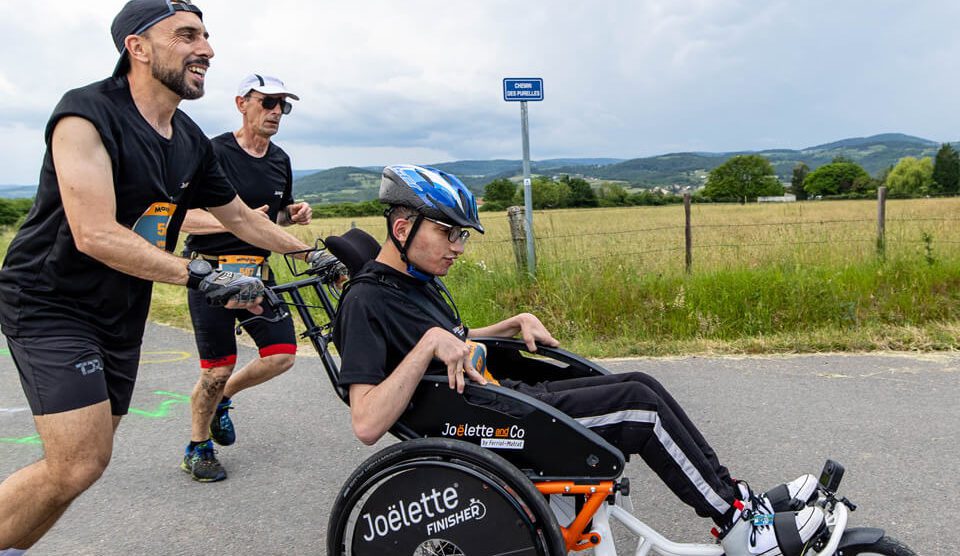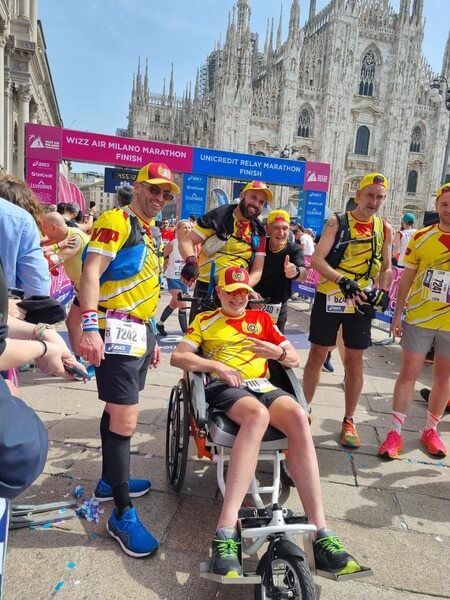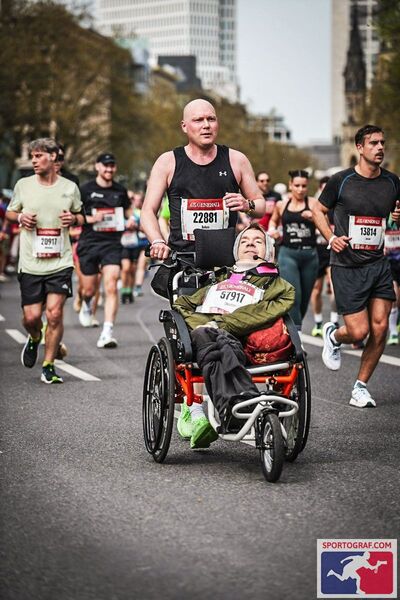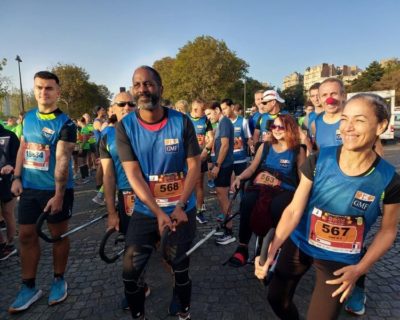
Running with a wheelchair : Key Points
Running with a wheelchair has become an accessible reality for many enthusiasts, thanks to adapted sports and leisure equipment and increasingly inclusive race routes, particularly on roads.
Whether you’re a runner or a passenger, this article provides practical information on equipment and preparation to fully enjoy this experience.
Table of Contents
ToggleWheelchairs for running
To effectively run with a wheelchair, it’s essential to have a model specifically adapted for the demands of road racing. Here are the key features to look for in a racing wheelchair:
- Stability and maneuverability: High-quality wheels and a solid structure allow for easy navigation, even on urban or slightly uneven surfaces.
- Lightweight and robust: A lightweight frame is essential for propulsion, while durability ensures safety and longevity throughout the race.
- Ergonomics and comfort: A well-fitted wheelchair ensures the passenger is comfortably positioned, minimizing discomfort during the race.

The Joëlette Finisher, for example, is a passive wheelchair specifically designed for road running.
It allows passengers to participate without any physical effort, while the runner handles the propulsion and direction.
Used in international marathons like the Berlin Half Marathon, the Milan Marathon, the Barcelona Marathon, and the Athens Half Marathon, the Joëlette Finisher ensures a smooth and secure experience, both for the runner and the passenger.
Preparing Physically and Mentally for the Race
- Physical training: For the runner, strengthening the upper body is essential for endurance and power, especially over long distances in urban environments.
- Simulating race conditions: Testing the wheelchair on different types of roads helps you become familiar with the specific requirements of road running.
- Hydration and nutrition: Maintaining good hydration and a balanced diet before the race can significantly improve performance and comfort.
To dive deeper into effective running nutrition, check out this video guide covering essential points like energy expenditure, carbohydrate loading, pre-race breakfast, and nutritional needs throughout the race. This approach helps runners maintain stable energy levels and avoid fatigue, optimizing both performance and overall race experience.
Wheelchair-Accessible Running Events : Choosing a Race
There is a wide range of running events adapted for people with disabilities. Whether it’s a marathon, half marathon, 10 km race, or a recreational event, inclusive options are becoming more common. Below are some types of wheelchair-accessible races, with real examples to help you choose your next event. You can also visit RunThrough for a list of wheelchair-accessible events.
Wheelchair-Accessible Marathons
- London Marathon (England): This iconic marathon is renowned for its accessibility and welcomes wheelchair participants every year. It provides an inclusive environment and specific accommodations for disabled participants, including trained volunteers to assist runners.
- Manchester Marathon: Also accessible for wheelchair runners, this marathon offers adapted refreshment zones and an ideal paved surface for wheelchairs.
Wheelchair-Accessible Half Marathons
- Great North Run (Newcastle, England): This half marathon attracts runners of all levels and includes options for wheelchair participants, with well-maintained routes and support along the course.
- Bath Half Marathon: Known for its friendly atmosphere and flat urban course, this half marathon also welcomes wheelchair runners, providing a safe and inclusive environment.
Wheelchair-Accessible 10K Races
- Vitality London 10,000: This 10 km race is an excellent choice for beginners or those who prefer shorter distances. The route is fully paved and suitable for wheelchairs, offering scenic views of London’s landmarks.
- Leeds 10K: An inclusive event, the Leeds 10K is wheelchair-accessible, with a route that runs through the city center and facilities adapted to everyone’s needs.
Recreational and Charity Wheelchair-Accessible Races
- Parkrun (UK): Parkrun organizes free 5 km races every Saturday at hundreds of locations across the UK. Many routes are wheelchair-accessible, providing a great opportunity to train or run for fun in a friendly setting.
- Race for Life (Events across the UK): This charity race series offers 5 km and 10 km events with wheelchair-accessible options. Race for Life also supports cancer research, making the experience meaningful for participants.
Running with a Partner: Coordination Between Runner and Passenger

Successful racing requires close coordination between the runner and the passenger, especially with a passive wheelchair like the Joëlette Finisher.
For the runner: Responsible for propulsion and safety, the runner should:
- Practice pushing the wheelchair on roads to anticipate the necessary effort.
- Use signals or gestures to communicate, especially for changes in speed or obstacles.
- Ensure the passenger’s comfort throughout the race, particularly during turns and pace changes.
For the passenger: Although the assisted runner doesn’t exert physical effort, collaboration remains important:
- Prepare with necessary equipment for a comfortable race (gloves, helmet if required).
- Familiarize yourself with communication signals to respond to turns or changes in pace.
- Enjoy the course and atmosphere, letting the runner manage propulsion and direction.
Running with a wheelchair is a rewarding experience, accessible to all with the right equipment and adequate preparation. Whether you participate as a runner or a passenger, these tips will help you get the most out of your next road race, be it a half-marathon or another urban event.

